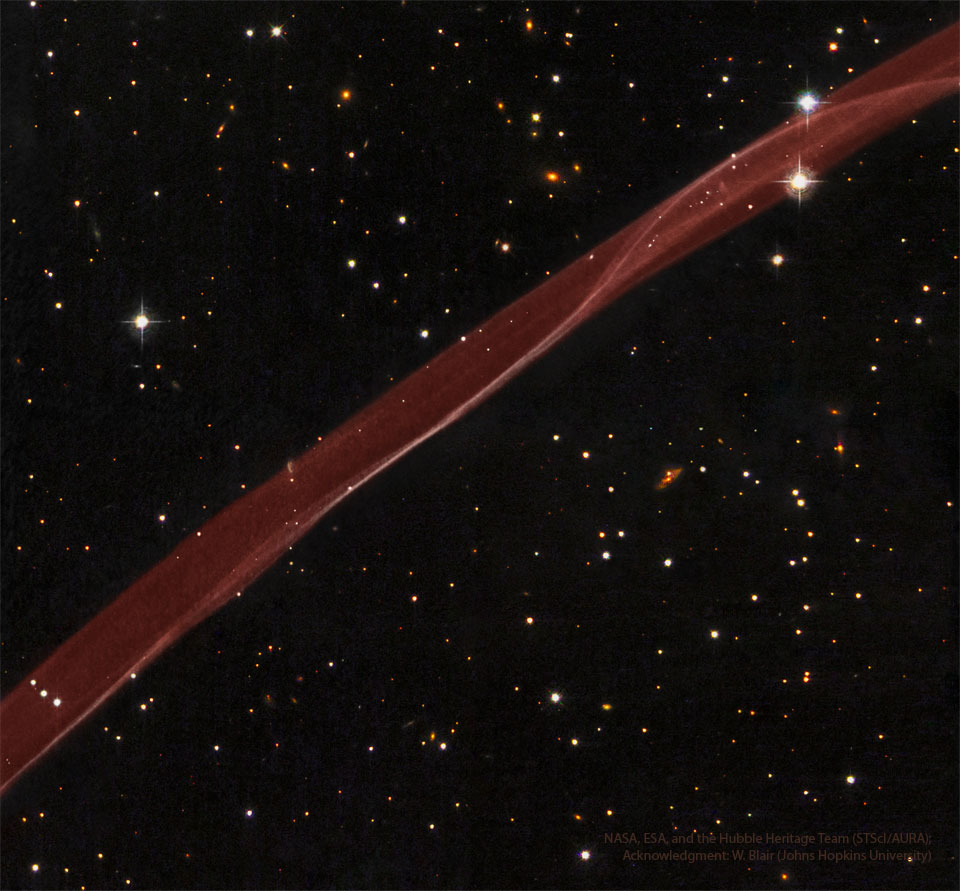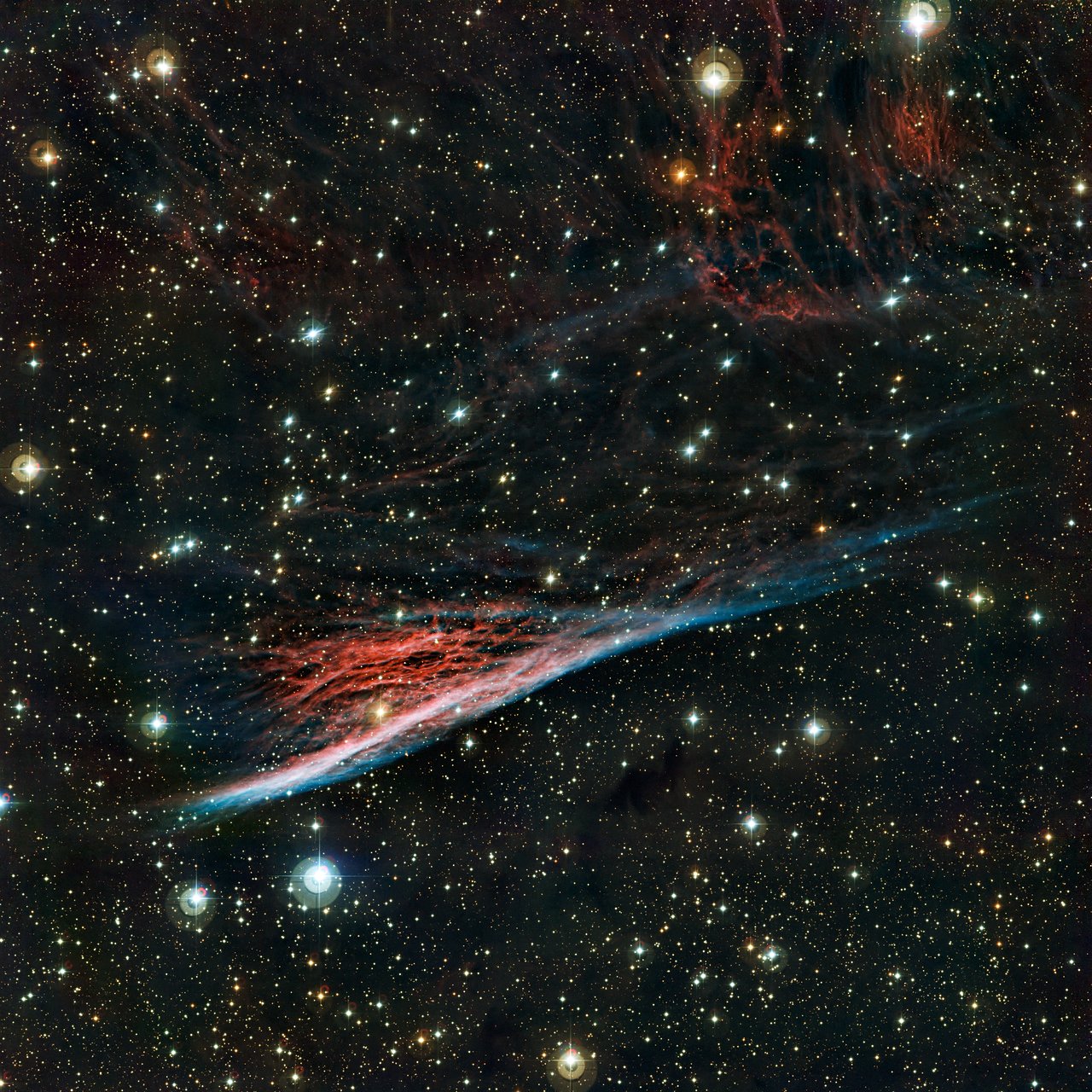APOD Robot wrote:
What created this unusual space ribbon? The answer: one of the most violent explosions ever witnessed by ancient humans. Back in the year 1006 AD, light reached Earth from a stellar explosion in the constellation of the Wolf (Lupus), creating a "guest star" in the sky that appeared brighter than Venus and lasted for over two years...
Pictured here is a small part of that expanding supernova remnant dominated by a thin and outwardly moving shock front that heats and ionizes surrounding ambient gas.
Wow. It looks positively unreal.
I'm a bit surprised at the color of shock front in the APOD, but I'm more surprised at the shock front's razor-sharp edges and perfectly uniform width.
Let's compare the APOD with two pictures of the Vela supernova remnant, one wide-angle picture of much of the supernova remnant, and one closeup of the part of the Vela supernova remnant known as the Pencil Nebula:
You can see that the Vela supernova remnant shock fronts tend to be rounded and "arc-shaped", not perfectly straight and narrow. Well, the Pencil Nebula is fairly straight, but parts of it flair out like a broom.
Also note the
red/blue color dichotomy in the Vela supernova remnant. Much of the ionized gas is red-glowing hydrogen alpha, but the outermost edges of the shock fronts are blue-green from doubly ionized oxygen.
In today's APOD, we can see an undulating line of white bordering the shock front. Why is it white? Should it really be blue-green from OIII?
I found something interesting and confusing on the Hubblesite page where you can read about the picture that is today's APOD:
Hubblesite wrote:
This image combines several exposures in both ACS and WFPC2. The ACS images were exposed through a filter transmitting the light of hydrogen, and the WFPC2 images were made through three filters transmitting wide bands of color in the red and near infrared, yellow- green, and blue portions of the spectrum. In the color composite, the ACS image is shown in red, the WFPC2 red/IR filter images are shown in red-orange, yellow-green filter images in green, and blue filter images in blue-violet.
Blue: F439W (B) Green: F555W (V) (Green=F555W)
Red: F658 N (H-alpha+[N II]) + F814W (I)
So according to the caption, the yellow-green filter used for today's APOD was a wideband filter centered on 555 nm, which is indeed a shade of yellow-green,
███.
But in the annotated image you can see that another filter was used, namely F606W. 606 nm is this color:
███. That's a big difference to me.
The "W" in the filter names means "wide", so these filters are sensitive to a wide range of wavelengths. Still, if you want to photograph an OIII ionization front, which is this color,
███, it seems like a better idea to use filters centered on
███ and
███ than on filters centered on
███ and
███.
So what I'm asking is this. Could there really be a cyan-colored OIII shock front in today's APOD, but the filters used for the image didn't do a good job of picking up the cyan hue of doubly ionized oxygen?
Ann
 SN 1006: A Supernova Ribbon from Hubble
SN 1006: A Supernova Ribbon from Hubble




